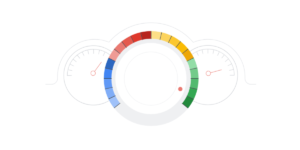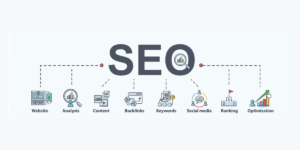
In simple terms, a sitemap is a blueprint of your website’s structure, designed to help search engines navigate and index your content efficiently. It’s essentially a list of all the pages on your site, organized in a hierarchical fashion, which provides search engine crawlers with valuable information about the layout and priority of your content.
Sitemaps come in two primary formats: XML and HTML. XML sitemaps are specifically designed for search engines, providing detailed information about each page, including when it was last updated and how often it’s changed. On the other hand, HTML sitemaps are geared towards human visitors, offering a user-friendly directory of your site’s pages for easy navigation.
The Importance Of Sitemaps For Search Engine Optimization (SEO)
When it comes to SEO, sitemaps play a crucial role in ensuring that your website gets the visibility it deserves. Here’s how:
Improved Indexation: By providing search engines with a clear roadmap of your site’s structure, sitemaps make it easier for them to crawl and index your content. This means that your pages are more likely to be discovered and included in search engine results, ultimately driving organic traffic to your site.
Faster Indexing: Without a sitemap, search engine crawlers may struggle to find all the pages on your site, especially if they’re buried deep within your navigation hierarchy. By submitting a sitemap to search engines like Google Search Console, you can expedite the indexing process and ensure that your new content gets picked up promptly.
Priority and Freshness: XML sitemaps allow you to prioritize certain pages and indicate when they were last updated. This helps search engines understand which content is most important and relevant, leading to better rankings for your key pages. Additionally, by regularly updating your sitemap with fresh content, you signal to search engines that your site is active and dynamic, which can positively impact your SEO efforts.
Error Identification: Sitemaps can also highlight any errors or issues with your site’s structure, such as broken links or inaccessible pages. By regularly reviewing your sitemap, you can identify and rectify these issues before they impact your site’s performance in search results.
Best Practices For Sitemap Implementation
Now that we’ve established the importance of sitemaps, let’s explore some best practices for implementing them effectively:
Include All Relevant Pages: Your sitemap should encompass all the important pages on your site, including not just your main content pages but also any subdomains, images, videos, or alternate language versions.
Keep it Updated: Regularly update your sitemap to reflect any changes to your site’s structure or content. This ensures that search engines always have access to the most current information about your site.
Submit to Search Engines: Once you’ve created your sitemap, don’t forget to submit it to search engines like Google Search Console, Bing Webmaster Tools, and Yahoo. This makes it easier for them to crawl and index your site, maximizing your chances of ranking well in search results.
Optimize for Mobile: With an increasing number of users accessing the web via mobile devices, it’s crucial to ensure that your sitemap is optimized for mobile usability. Make sure that all links are accessible and properly formatted for mobile users.
Monitor Performance: Keep an eye on your site’s performance in search results and use tools like Google Search Console to monitor how search engines are crawling and indexing your site. If you notice any issues, such as pages not being indexed or crawling errors, address them promptly to maintain optimal visibility.
For more information on creating and optimizing sitemaps, check out these helpful resources:
– XML Sitemaps: A Beginner’s Guide
– The Importance of Sitemaps for SEO
– HTML Sitemap Generator
Happy sitemapping, and may your website’s visibility soar to new heights!

My name is Greg and I have 20 years of experience in creating and managing websites. I have 6+ million views collectively on social media platforms like Quora, Facebook, LinkedIn, and Instagram. Contact me to get your website optimized for search engines.











